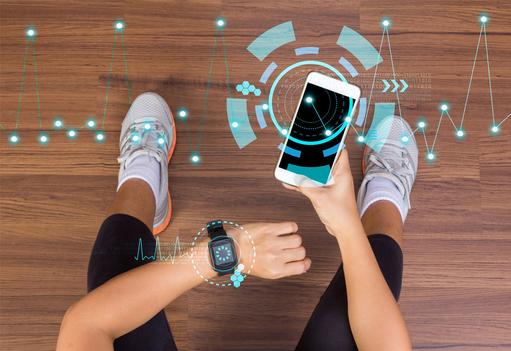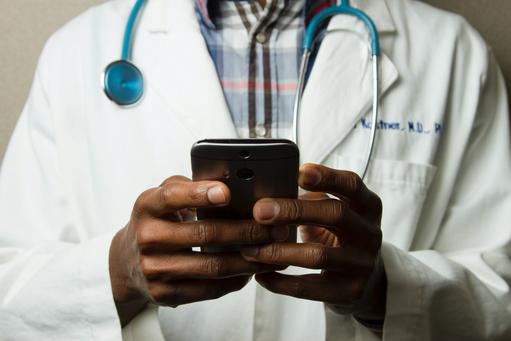- Digital therapeutics and artificial intelligence (AI) techniques are increasing their influence on the medical devices industry and fuelling a shift of healthcare away from hospitals into peoples’ homes
- This poses a challenge to traditional medical device companies (MedTechs) that solely focus on manufacturing physical devices for hospital-based episodic interventions
- Some MedTechs are changing their business models and strategies, diverting their focus to patients, and adding digital therapeutic applications to their legacy offerings
- Zimmer-Biomet and Stryker are MedTechs that have embraced digital therapeutics and AI
- Stryker’s CEO advises other MedTechs to ‘lean-in on AI and don’t be sceptical’
Leaning-in on digital and AI
Rapidly growing digital therapeutic technologies are disrupting hospital-based healthcare and posing a challenge to those medical device companies that are slow to complement their legacy physical product offerings with patient centric digital solutions. Such technologies have the potential to enhance patient outcomes, reduce healthcare costs, and give providers access to new revenue streams. Today, digital solutions increasingly contribute to the prevention, management, and treatment of a wide range of diseases and health conditions. Their rapid growth is driven by advances in the behavioural sciences, artificial intelligence (AI) techniques and the increase in the consumer health wearables market, which is converging with the regulated medical devices market. This convergence facilitates care to move away from hospitals and into peoples’ homes.
In this Commentary
This Commentary describes how two decades ago a world-renowned surgeon and CEO of a large hospital group warned that digital therapeutics would disrupt healthcare and push a lot of hospital-based care to peoples’ homes. For years the medical devices industry did not pay too much attention to such warnings and continued to focus on manufacturing physical products for surgeons in hospitals. The Commentary describes two leading MedTechs - Zimmer-Biomet and Stryker – which have recently begun to reinvent themselves and embrace digital therapeutics and AI techniques expected to improve patient outcomes and reduce surgical inconsistencies. We briefly develop this thought process by suggesting how machine learning AI techniques might be employed to reduce the high failure rates of spinal surgeries. The Commentary describes the large and growing global market for digital therapeutics and prescription digital therapeutics, a large proportion of which are enabled by wearables and telehealth. The market for digital therapeutics is large enough and growing fast enough to pose a threat to traditional medical device companies that solely manufacture physical offerings and fail to develop digital solutions to improve patient journeys. Although some MedTechs neither have the resources nor the mindsets to develop digital solutions, it seems reasonable to suggest that, in the medium term, they will be obliged to acquire or develop such assets to remain competitive. However, achieving this will be challenging.
Early warnings of change
Over a decade ago, Devi Shetty, warned health professionals to prepare for care to become heavily influenced by digital therapeutics, which he argued would move a significant portion of care away from hospitals and into peoples’ homes. This warning had resonance because Shetty is a surgeon as well as being the founder and executive director of Narayana Health, one of India’s largest hospital groups. In an interview with HealthPad in 2012 he suggested that hospitals were becoming less relevant in a new, and rapidly growing digitally driven healthcare ecosystem. “Healthcare of the future will be dramatically different to that of the past. The future is not an extension of the past. In the future, chronic illnesses will be treated at home”, said Shetty and continued, “The next big thing in healthcare is not going to be a magic pill, a faster scanner, or a new operation. It’s going to be digital therapeutics, which will dramatically change the way health professionals interact with patients. Every step of a patient’s care journey will be informed by software. This will make healthcare safer for the patient and shift most of hospital activities to the home. If a physician doesn’t have to operate on a patient, the patient can be anywhere, distance doesn’t matter”. Shetty repeated this argument at a 2022 Microsoft ‘Future Ready’ conference suggesting that, “95% of people who are unwell, don’t need an operation. All they need is medical intervention, which can be enabled by digital technology and telehealth and treated in the home”.
Leading MedTech companies reinventing themselves
Two decades after Shetty’s warning, the CEOs of Zimmer-Biomet and Stryker, respectively Bryan Hanson, and Kevin Lobo, have made substantial commitments to digital therapeutic solutions that improve patient outcomes, reduce surgical inconsistencies and extend treatment and monitoring to the entirety of patients’ journeys, much of which takes place in patients' homes. Medical device companies that fail to develop software solutions or link-up with providers of such technologies could risk losing market share to emerging competitors.
Zimmer-Biomet and digital therapeutics
Zimmer is a player in total knee arthroplasties, which involve replacing the knee joint with a prosthetic device that carries out similar functions as a person’s own knee. The surgery has become routine. In 2020, US physicians carried out ~1m total knee arthroplasties, and by 2030, ~2m such procedures are expected to be carried out annually in the US. In 2020, the global total knee replacement market was valued at ~US$7.8bn, expected to grow at a CAGR of >6%, and reach ~US$12.5bn by 2027.
In 2021, Zimmer and Canary Medical, a software company, which had developed an implantable digital therapeutic application, received approval from the US Food and Drug Administration (FDA) to market Persona IQ: the world’s first ‘intelligent’ total knee replacement. Zimmer’s traditional knee prosthesis is embedded with Canary’s technology to provide a range of automatic, reliable, and accurate data and analyses that facilitates remote monitoring and tracking of patients' post-operative progress long after they have left hospital. Following this success, Hanson is directing a substantial percentage of Zimmer’s R&D spend on the development of digital therapeutic solutions, and Persona IQ is expected to be the first in a pipeline of intelligent joint prostheses.
Stryker and digital therapeutics
In a March 2022 interview, Stryker’s CEO, Kevin Lobo, stressed his ongoing commitment to increase his company’s digital therapeutic and AI capabilities. In 2021 Stryker acquired Gauss Surgical, which had developed Triton™, an AI-enabled app for real-time monitoring of blood loss during surgery. “After a mother gives birth”, says Lobo “it’s important to calculate how much blood she’s lost. Today, this quantification is very crude and rudimentary. Triton™ allows you to use your smartphone to accurately measure the amount of blood that is in sponges as well as cannisters. It can distinguish between different liquids and measure only the haemoglobin. This is critical to determining whether a mother needs a transfusion or not. You would be shocked, even here in the US, how often a mother doesn’t get a transfusion she needs or gets one she doesn’t need”.
In January 2022, Stryker acquired Vocera Communications for ~US$3bn. Vocera is a US Nasdaq traded company founded in 2000 that makes wireless communications systems for healthcare and has developed a digital platform, which helps connect caregivers and "disparate data-generating medical devices". The platform is used by >2,300 facilities throughout the world, including ~1,900 hospitals. Interoperability between the platform and >150 clinical and operational systems reduce health risks and enhance the consistency of surgical procedures, speeds up staff response times; and improves patient outcomes, safety, and affordability. According to Lobo, "Vocera will help Stryker significantly accelerate our digital therapeutic aspirations to improve the lives of caregivers and patients".
Lobo has made AI a shared service. Stryker employs ~200 software engineers that are using AI. “This we never had before at Stryker. AI is going to be a central core competence for our company. I can see that all our business units are going to be using AI within the next two to three years”, says Lobo, who expects AI inspired digital therapeutic applications to “lead to more consistent outcomes for our procedures”. According to Lobo this is “a big deal because today there are a lot of variations in surgical outcomes”.
|











